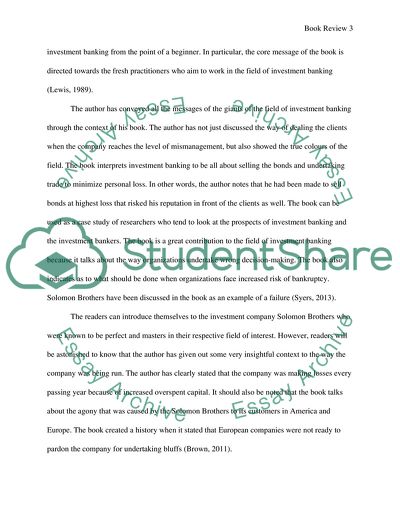Cite this document
(Liars Poker: Two Cities, True Greed by M. Lewis Book Report/Review Example | Topics and Well Written Essays - 1500 words, n.d.)
Liars Poker: Two Cities, True Greed by M. Lewis Book Report/Review Example | Topics and Well Written Essays - 1500 words. https://studentshare.org/finance-accounting/1859301-book-review-lewis-m-1989-liars-poker-two-cities-true-greed-hodder-stoughton
Liars Poker: Two Cities, True Greed by M. Lewis Book Report/Review Example | Topics and Well Written Essays - 1500 words. https://studentshare.org/finance-accounting/1859301-book-review-lewis-m-1989-liars-poker-two-cities-true-greed-hodder-stoughton
(Liars Poker: Two Cities, True Greed by M. Lewis Book Report/Review Example | Topics and Well Written Essays - 1500 Words)
Liars Poker: Two Cities, True Greed by M. Lewis Book Report/Review Example | Topics and Well Written Essays - 1500 Words. https://studentshare.org/finance-accounting/1859301-book-review-lewis-m-1989-liars-poker-two-cities-true-greed-hodder-stoughton.
Liars Poker: Two Cities, True Greed by M. Lewis Book Report/Review Example | Topics and Well Written Essays - 1500 Words. https://studentshare.org/finance-accounting/1859301-book-review-lewis-m-1989-liars-poker-two-cities-true-greed-hodder-stoughton.
“Liars Poker: Two Cities, True Greed by M. Lewis Book Report/Review Example | Topics and Well Written Essays - 1500 Words”. https://studentshare.org/finance-accounting/1859301-book-review-lewis-m-1989-liars-poker-two-cities-true-greed-hodder-stoughton.


